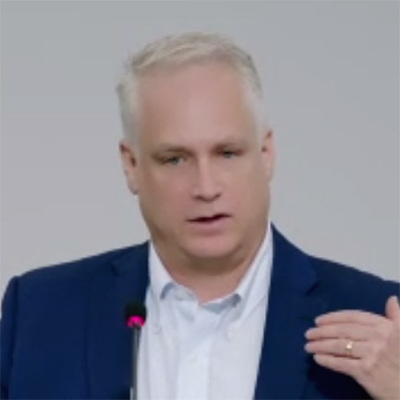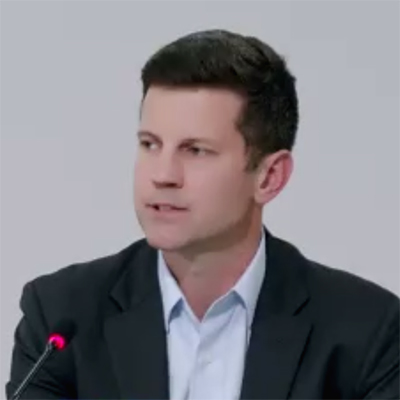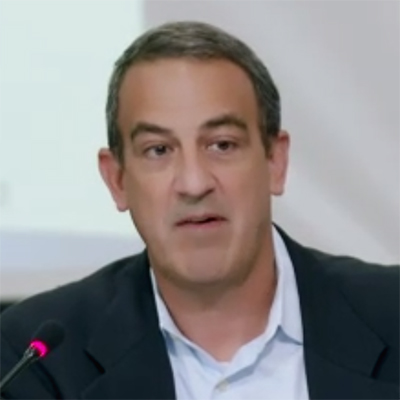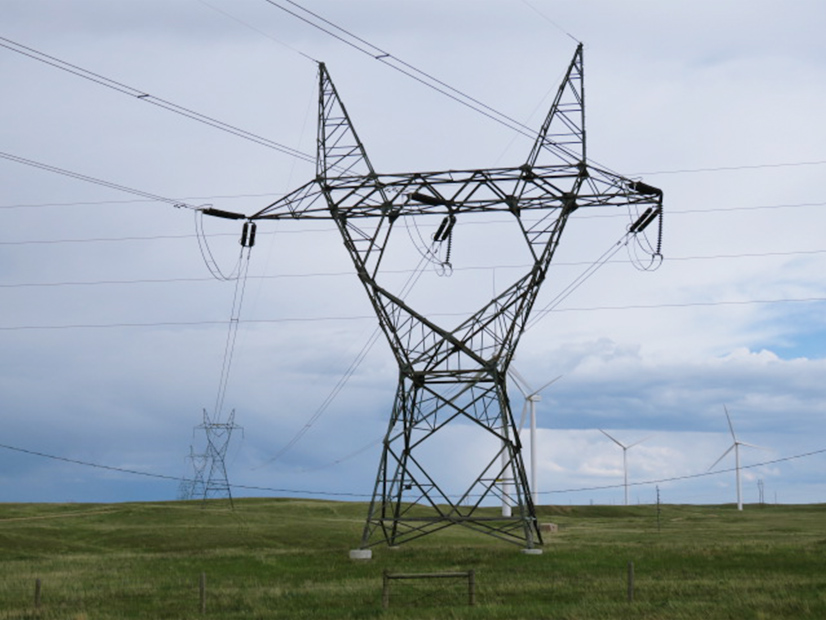CAISO convened two days of stakeholder meetings last week to discuss its straw proposal for adding an extended day-ahead market (EDAM) to the real-time Western Energy Imbalance Market — an effort that could bring more of the West under the ISO’s umbrella without forming a Western RTO.
The ISO fast-tracked the EDAM initiative last fall following a monthslong hiatus. Three stakeholder working groups met from January through mid-March to offer input on important design elements, and CAISO incorporated the groups’ results into the EDAM straw proposal. (See CAISO Issues EDAM Straw Proposal for the West.)
 Mark Rothleder, CAISO | CAISO
Mark Rothleder, CAISO | CAISO“In the first three months of this year, we convened working groups at an expeditious — some would say ‘crazy’ — pace,” CAISO COO Mark Rothleder said, opening the two-day meeting Wednesday. “Nonetheless, we listened and processed the information that we heard to develop the straw proposal on schedule on April 28.”
“Today, we are here to discuss the straw proposal,” Rothleder said. “We are also here to listen and receive initial feedback from you all on the straw proposal. We know the straw proposal is not the final proposal.
“I’m expecting you will come out of here maybe a little bit disappointed that there’s not more detail, maybe wanting more,” he said. “I think that’s OK. This is a longer process. We will be going through several iterations, and we can’t go through all the details today. So, I just wanted to make sure that our expectations are set.”
Panel discussions May 24 involved the EDAM’s proposed resource sufficiency rules and transmission commitments, two of the more contentious issues in the process.
Resource Sufficiency
The EDAM straw proposal would require participants to pass a day-ahead resource sufficiency evaluation (RSE) to show they have enough supply to meet internal demand and reserve requirements to avoid “leaning” on the market for additional supply. Failure to pass the RSE could lead to transfer limits or an opportunity for the entity to cure the deficiency through residual supply for a fee.
Jim Baggs, regulation and market development officer for Seattle City Light, moderated a panel on resource sufficiency. He asked panelists why resource sufficiency is so important in EDAM design.
 Mike Wilding, PacifiCorp | CAISO
Mike Wilding, PacifiCorp | CAISOMike Wilding, vice president of energy supply management at PacifiCorp, answered that “at the risk of being Captain Obvious up here, if we’re all going to go in this together — if we’re going to go into the EDAM footprint together — we have to have confidence that each of us has the ability to serve our load, and that if any single [balancing authority] gets in trouble, that that does not cascade to the rest of us.”
Jeff Spires, director of power at Powerex, said reliability remains the top priority in the West, and that much of that effort is now focused on the work of the Western Power Pool to develop its Western Resource Adequacy Program (WRAP). (See NWPP Rebrands as Western Power Pool.)
“One of the areas of concern that we have when we’re looking at EDAM and market design is whether the design can be compatible with the WRAP program,” Spires said.
 Jeff Spires, Powerex | CAISO
Jeff Spires, Powerex | CAISOMany EDAM participants are likely to be WRAP participants too, but it is unknown if WRAP’s resource adequacy construct and CAISO’s RSE requirements will be compatible, he said.
“That’s inherently a difficult place to start from for a market design because we are, in effect, combining two different RA programs,” Spires said, adding, “Our concern is, will the rules be designed in a way that complements WRAP or not?”
Scott Ranzal, director of portfolio management with Pacific Gas and Electric, agreed that bridging gaps between the WRAP and EDAM processes is important but said the EDAM’s proposed “resource sufficiency test is a critical step in order to actually achieve a successful operating paradigm and provide reliable service. I’ve heard no argument in this room about anybody in here saying they don’t want reliable service. The question becomes, how do we get to that, and how do we define it?”
Reliability is “not an easy task,” Ranzal said. “No argument there. But there’s plenty of really smart people here working on this problem. I do think that while it has challenges, it is a solvable problem.”
Transmission Commitment
Making sure transmission is available for EDAM transfers is one of the more difficult issues facing the program’s designers. The straw proposal offers alternative proposed approaches, which still must be weighed by stakeholders and agreed upon.
“Before the day-ahead market run, each EDAM entity will identify the transmission that may be available to the day-ahead market to support transfers between EDAM entities across the EDAM footprint,” the straw proposal says.
But how to go about it?
The CAISO working group on transmission grouped transmission into three “buckets” to “define how entities can make transmission capacity available for transfers.” Its work was incorporated into the straw proposal:
- Bucket 1 is transmission required to support resource sufficiency. It consists of “transmission rights held by transmission customers of the EDAM entity or another transmission service provider within the EDAM [balancing authority area] that have contractual agreements for energy or capacity transfers for RSE accounting purposes in the day-ahead timeframe,” the straw proposal says. “These transmission rights holders must make Bucket 1 transmission available to the market because it is needed to support resource sufficiency plans across an intertie with an adjoining EDAM BAA.”
- Bucket 2 consists of “transmission rights held by transmission customers of the EDAM entity or another transmission service provider within the EDAM BAA that are not associated with contractual obligations used to demonstrate resource sufficiency,” it says. “This transmission has already been sold similarly to bucket 1 transmission, but the transmission rights holder can voluntarily make it available to the EDAM in return for transfer revenue. To ensure reliable transfers, Bucket 2 transmission must be firm or conditional firm.”
- Bucket 3 transmission consists of “unsold firm available transfer capability (ATC) offered by the EDAM entity, in its transmission service provider function, to support transfers at interfaces between EDAM BAAs,” the straw proposal says. “The EDAM entity would be expected to make available all remaining unsold firm ATC at an intertie with an adjoining EDAM BAA by 10 a.m. in the day-ahead market and to stop [open-access transmission tariff] sales of firm ATC at that intertie between 10 a.m. and 1 p.m. while the day-ahead market is running.”
The working group focused on two approaches to make Bucket 3 transmission available to the market.
Under Approach 1, “EDAM entities would make Bucket 3 transmission available to the market for optimization at a hurdle rate (i.e., the published tariff rate),” the straw proposal says. “The hurdle rate allows the transmission provider to recover its costs of unsold transmission supporting EDAM transfers. However, including a hurdle rate in the optimization may cause pancaking of transmission hurdle rates, limiting efficient transfer and resource scheduling in the day-ahead market.”
 Scott Ranzal, PG&E | CAISO
Scott Ranzal, PG&E | CAISOUnder Approach 2, “entities would make Bucket 3 transmission available to the market hurdle-free through a reciprocity framework, similar to the [Western Energy Imbalance Market] today, to derive mutual benefits of higher volumes of EDAM transfers. There would be no compensation for the transmission usage through the market. EDAM entities would forego transmission revenues for overall efficient use of the transmission and the associated EDAM benefits.”
In a panel discussion, Kevin Smith, an attorney representing the Balancing Authority of Northern California (BANC), said that as the working group members planned, “we were trying to put some structure around how transmission is going to be viewed, how it’s utilized and so forth. And so, the buckets just became a simple convention.”
Bucket 3, it became clear, would be a problem for EDAM.
“As we looked at this and started talking hurdle rates,” Bucket 3 became the focus, Smith said.
“I would personally like to put a dagger in the heart, forever, of the hurdle-rate concept, but that’s just my own personal view,” he said.
Kathy Anderson, senior manager of real-time operations and markets with Idaho Power, said that as the working group’s discussions continued, “it became apparent that the more hurdle rates you stick in … the less economic and effective and optimized your solution becomes.”
“So that kind of led to that concept of, well, how can we maybe not put a hurdle rate in there,” as the group ultimately proposed in Approach 2.
Stakeholder comments on the straw proposal are due by June 16. CAISO plans to hold technical workshops on EDAM in late June and July. It also plans to post videos of the May 25-26 stakeholder meeting on the initiative’s webpage.


